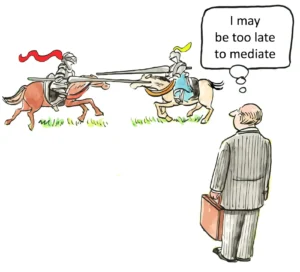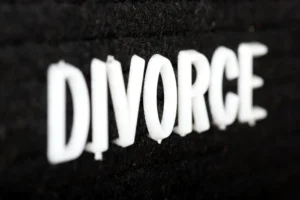Juvenile Crime Diversion Programs: Keeping Your Child’s Record Clean
Juvenile crime diversion programs have emerged as a crucial component in the modern approach to youth justice, offering a pathway for young offenders to avoid the long-lasting consequences of a criminal record. These programs aim to redirect youth away from the traditional court system, focusing instead on rehabilitation and accountability without the stigma of formal criminal proceedings. For parents and guardians concerned about their child’s future, understanding these programs is essential in navigating the complex landscape of juvenile justice.
The concept of diversion in juvenile justice is not new, but its implementation and scope have evolved significantly in recent years. As communities across the United States grapple with the challenges of youth crime, there is a growing recognition that the punitive approach of the past may not always serve the best interests of young offenders or society at large. Juvenile diversion initiatives seek to address the root causes of delinquent behavior while holding youth accountable for their actions in ways that are more constructive and less damaging to their long-term prospects.
At its core, the goal of juvenile crime diversion is to intervene early in a young person’s life, redirecting them from a path that might lead to more serious offenses and entanglement with the adult criminal justice system. By offering alternatives to traditional court processing, these programs aim to reduce recidivism, promote positive youth development, and ultimately enhance public safety. The benefits of successful diversion extend beyond the individual youth to their families, communities, and the broader justice system.
One of the primary advantages of diversion programs is the opportunity they provide for keeping a young person’s record clean. In many jurisdictions, successful completion of a diversion program can result in charges being dismissed or never filed, effectively giving the youth a second chance without the burden of a criminal record. This clean slate can be invaluable for future educational and employment opportunities, as well as for maintaining positive relationships within the community.
The structure and content of juvenile diversion programs can vary widely depending on the jurisdiction and the specific needs of the youth involved. Some common elements include counseling, community service, restitution to victims, educational programs, and skill-building activities. Many programs also incorporate restorative justice principles, which focus on repairing harm and rebuilding relationships rather than simply punishing the offender.
For parents navigating the juvenile justice system, understanding the eligibility criteria for diversion programs is crucial. While specific requirements can vary, diversion is typically offered to first-time offenders or those charged with less serious offenses. Factors such as the youth’s age, the nature of the alleged offense, and the individual’s willingness to take responsibility for their actions may all play a role in determining eligibility.
The process of entering a diversion program often begins at the point of initial contact with law enforcement or the court system. In some cases, police officers may have the discretion to refer youth directly to diversion programs rather than proceeding with formal charges. In other instances, prosecutors or judges may offer diversion as an alternative to traditional court processing. Regardless of the entry point, early intervention is key to maximizing the benefits of diversion.
Once a youth is referred to a diversion program, an assessment is typically conducted to determine the most appropriate interventions. This may involve evaluating the young person’s risk factors, strengths, and needs to develop a tailored plan of action. Parental involvement is often a critical component of this process, as family support can significantly enhance the likelihood of successful program completion.
The duration and intensity of diversion programs can vary widely, ranging from brief interventions lasting a few weeks to more comprehensive programs that may extend for several months. Throughout the process, youth are typically required to meet certain conditions, such as attending counseling sessions, maintaining good behavior at school, or completing community service hours. Regular check-ins with program staff help ensure compliance and provide opportunities for ongoing support and guidance.
One of the key strengths of many diversion programs is their emphasis on addressing underlying issues that may contribute to delinquent behavior. This might include substance abuse treatment, mental health counseling, or family therapy. By tackling these root causes, diversion programs aim to equip young people with the tools and support they need to make better choices and avoid future involvement with the justice system.
The role of community-based organizations in implementing diversion programs cannot be overstated. Many successful initiatives rely on partnerships between the justice system and local nonprofits, schools, and social service agencies. These collaborations allow for a more holistic approach to youth development, leveraging community resources to provide comprehensive support to young people and their families.
For parents, the decision to participate in a diversion program can be complex. While the potential benefits are significant, there may also be concerns about admitting guilt or the consequences of failing to complete the program. It’s important for families to carefully consider their options, ideally with the guidance of legal counsel experienced in juvenile matters. Understanding the specific terms of the diversion agreement, including any potential consequences for non-compliance, is crucial before making a decision.
The effectiveness of juvenile diversion programs has been the subject of considerable research and debate. While outcomes can vary depending on program design and implementation, many studies have shown promising results in terms of reducing recidivism and improving youth outcomes. Successful programs often share certain characteristics, such as individualized interventions, strong community partnerships, and a focus on skill-building and positive youth development.
One of the challenges in implementing effective diversion programs is ensuring that they truly divert youth from the justice system rather than widening the net of those subject to intervention. Critics have raised concerns about the potential for net-widening, where diversion programs inadvertently bring more youth into contact with the justice system for behaviors that might previously have been handled informally. Careful program design and ongoing evaluation are essential to mitigate this risk and ensure that diversion initiatives are targeting the appropriate population.
The legal considerations surrounding juvenile diversion programs are complex and can vary significantly by jurisdiction. Issues such as confidentiality, due process rights, and the potential consequences of program failure must be carefully navigated. In some cases, participation in a diversion program may require an admission of guilt or responsibility, which can have implications if the youth fails to complete the program successfully. Understanding these legal nuances is crucial for both families and program administrators.
One emerging trend in juvenile diversion is the use of restorative justice practices. This approach focuses on repairing the harm caused by the offense, often through direct dialogue between the offender and the victim. Restorative justice programs can take various forms, from victim-offender mediation to community conferences. These initiatives aim to hold youth accountable for their actions while also promoting empathy, understanding, and healing for all parties involved.
The role of technology in juvenile diversion programs is evolving rapidly. Many jurisdictions are exploring the use of online platforms and mobile applications to enhance program delivery and engagement. These tools can facilitate communication between youth, families, and program staff, provide access to educational resources, and help track progress toward program goals. However, the use of technology in this context also raises important questions about privacy, data security, and equitable access.
Another important consideration in the implementation of diversion programs is ensuring cultural competence and addressing racial and ethnic disparities in the juvenile justice system. Research has consistently shown that youth of color are disproportionately represented at various stages of the justice system, including arrest and court referral. Effective diversion programs must be designed and implemented with an awareness of these disparities and a commitment to equitable access and outcomes for all youth.
The intersection of juvenile diversion and mental health is an area of growing focus. Many young people who come into contact with the justice system struggle with mental health issues, and diversion programs can provide a valuable opportunity for early intervention and treatment. Some jurisdictions have developed specialized mental health diversion programs that connect youth with appropriate services while diverting them from formal court processing.
Similarly, the role of substance abuse treatment in juvenile diversion is critical. Many youth who engage in delinquent behavior struggle with substance use issues, and addressing these underlying problems can be key to preventing future offenses. Diversion programs that incorporate evidence-based substance abuse treatment can provide young people with the support they need to overcome addiction and make healthier choices.
The financial implications of juvenile diversion programs are significant, both for families and for the broader justice system. While participation in diversion may involve some costs, such as program fees or restitution, these expenses are typically far less than the financial burden of formal court proceedings and potential incarceration. From a systemic perspective, effective diversion programs can result in substantial cost savings by reducing the need for court resources, detention facilities, and long-term correctional interventions.
As juvenile diversion programs continue to evolve, there is growing interest in expanding their scope to include more serious offenses. While diversion has traditionally been reserved for first-time offenders and those charged with minor crimes, some jurisdictions are exploring ways to offer diversion options for youth charged with more serious offenses. This approach recognizes that even in cases involving more significant harm, there may be opportunities for meaningful intervention and rehabilitation outside the traditional court system.
The role of education in juvenile diversion cannot be overstated. Many diversion programs include educational components, ranging from tutoring and academic support to specialized curricula focused on decision-making skills and conflict resolution. By addressing educational challenges and promoting academic success, these programs aim to reduce risk factors associated with delinquent behavior and enhance young people’s prospects for long-term success.
Another important aspect of juvenile diversion is the focus on skill-building and positive youth development. Many programs incorporate activities designed to build self-esteem, enhance communication skills, and develop leadership abilities. These initiatives recognize that providing young people with positive experiences and opportunities for growth is essential to preventing future involvement with the justice system.
The impact of juvenile diversion programs extends beyond the individual youth to their families and communities. Many initiatives include family engagement components, recognizing that parental involvement and support are crucial to a young person‘s success. Some programs offer parenting classes or family counseling to address underlying issues that may contribute to delinquent behavior. By strengthening family relationships and building parental capacity, these programs aim to create a more supportive environment for youth.
As juvenile diversion programs continue to gain traction, there is growing interest in developing standardized metrics for evaluating their effectiveness. While outcomes such as recidivism rates and program completion are commonly tracked, there is a push to incorporate broader measures of success, including educational attainment, employment outcomes, and improvements in mental health and well-being. Developing robust evaluation frameworks is essential for demonstrating the value of diversion programs and informing ongoing improvements in program design and implementation.
The legal landscape surrounding juvenile diversion is complex and continually evolving. Recent years have seen a trend toward expanding diversion options through legislative action, with many states passing laws that mandate or encourage the use of diversion for certain categories of offenses. These legislative efforts reflect a growing consensus that diversion can be an effective tool for addressing juvenile delinquency while promoting public safety and fiscal responsibility.
One area of ongoing debate in the field of juvenile diversion is the appropriate balance between accountability and support. While diversion programs aim to hold youth responsible for their actions, there is recognition that punitive approaches may be counterproductive for many young offenders. Striking the right balance between consequences and rehabilitation is a key challenge for program designers and implementers.
The role of victim input in juvenile diversion programs is another important consideration. While the primary focus is often on the needs and rehabilitation of the young offender, many programs also seek to address the needs and concerns of victims. This might involve victim-offender mediation, restitution agreements, or other forms of victim engagement. Balancing the interests of victims with the goals of youth rehabilitation can be challenging but is essential for creating a truly restorative approach to juvenile justice.
As juvenile diversion programs continue to evolve, there is growing interest in leveraging data analytics and predictive modeling to enhance program effectiveness. By analyzing patterns in youth behavior and program outcomes, jurisdictions can work to identify the most effective interventions for different types of offenders and tailor their approaches accordingly. However, the use of such technologies in the juvenile justice context also raises important ethical considerations, particularly around issues of privacy and potential bias.
The intersection of juvenile diversion and immigration law is an area of increasing complexity. For non-citizen youth, involvement with the justice system can have serious immigration consequences, potentially affecting their ability to remain in the country or adjust their status. Diversion programs that are sensitive to these issues and designed to minimize negative immigration impacts can play a crucial role in protecting vulnerable youth and their families.
As we look to the future of juvenile justice, it’s clear that diversion programs will continue to play a central role in efforts to address youth crime and promote positive outcomes for young people. By offering alternatives to traditional court processing and focusing on rehabilitation and skill-building, these initiatives have the potential to transform lives and strengthen communities. For parents, understanding the options available through diversion programs is essential in navigating the challenges of juvenile delinquency and working to secure a brighter future for their children.
Citations:
- https://www.jedplatform.com/2024/12/27/benefits-of-diversion-programs/
- https://www.kcgov.us/816/How-Juvenile-Diversion-Works
- https://www.aecf.org/blog/report-expand-law-enforcements-role-in-pre-arrest-diversion-of-youth
- https://www.sentencingproject.org/publications/protect-and-redirect-americas-growing-movement-to-divert-youth-out-of-the-justice-system/
- https://whyy.org/articles/philadelphia-larry-krasner-juvenile-offenders/
- https://www.modelsforchange.net/publications/301/Juvenile_Diversion_Guidebook.pdf
- https://www.youtube.com/watch?v=9YHN-vgDm7g
- https://info.mstservices.com/blog/benefits-of-diversion-programs
- https://cpjustice.org/the-case-for-diversion-programs-a-new-strategy-for-youth-justice/
- https://www.ajblawfirm.com/articles/the-benefits-of-juvenile-diversion-programs
- https://law.ucla.edu/sites/default/files/PDFs/Criminal_Justice_Program/Addressing_Legal_Issues_in_Youth_Diversion.pdf
- https://www.aecf.org/blog/legal-considerations-for-successful-youth-diversion-programs
- https://www.sentencingproject.org/reports/diversion-a-hidden-key-to-combating-racial-and-ethnic-disparities-in-juvenile-justice/
- https://www.aecf.org/blog/what-is-juvenile-diversion
- https://www.ncsl.org/civil-and-criminal-justice/diversion-in-the-juvenile-justice-system
- https://nij.ojp.gov/topics/articles/five-things-about-juvenile-delinquency-intervention-and-treatment
- https://www.sentencingproject.org/policy-brief/protect-and-redirect-best-practices-for-juvenile-diversion/
- https://www.juvjustice.org/blog/1444
- https://www.vera.org/news/diversion-programs-are-a-smart-sustainable-investment-in-public-safety
- https://ojjdp.ojp.gov/sites/g/files/xyckuh176/files/mpg-iguides/topics/diversion-programs/index.html
- https://www.sentencingproject.org/diversion-the-next-frontier-in-reforming-youth-justice/
- https://cops.usdoj.gov/html/dispatch/12-2024/juvenile_justice.html
- https://www.ojp.gov/ncjrs/virtual-library/abstracts/diversion-programs-juvenile-justice-system-alternative-method
- https://www.ncsl.org/newsletter/details/juvenile-justice-update-march-2025
- https://humanservices.hawaii.gov/oys/jjsac/
- https://ojp.gov/news/news-releases-2025
- https://info.mstservices.com/blog/7-juvenile-justice-reform-trends
- https://www.realchangenews.org/news/2025/02/12/youth-programs-matter-importance-advocating-youth-justice
- https://ojjdp.ojp.gov/model-programs-guide/home
- https://jlc.org/issues
- https://www.nytimes.com/2025/01/28/magazine/juvenile-prison-crime-rates.html
- https://youth.gov/youth-topics/juvenile-justice/reentry
- https://www.sentencingproject.org/reports/why-youth-incarceration-fails-an-updated-review-of-the-evidence/
- https://www.courts.michigan.gov/news-releases/2025/january/juvenile-justice-reform-moves-forward-with-status-offense-diversion-project/
- https://www.aecf.org/work/juvenile-justice
- https://pmc.ncbi.nlm.nih.gov/articles/PMC6438718/
- https://www.aecf.org/blog/webinar-legal-and-policy-issues-with-youth-diversion-programs
- https://www.ylc.org/navigate-juvenile-justice-law/part-1-youth-diversion/
- https://www.ncsl.org/resources/details/Juvenile-Justice-Update-March-2025
- https://www.juvjustice.org/federal-policy/juvenile-justice-and-delinquency-prevention-act
- https://www.katiewalshlaw.com/blog/understanding-diversion-programs-keeping-your-teen-out-of-court/
- https://ojp.gov/ncjrs/virtual-library/abstracts/signposts-along-diversionary-detour-legal-issues-juvenile-justice
- https://pmc.ncbi.nlm.nih.gov/articles/PMC8427971/
- https://www.lawinfo.com/resources/criminal-defense/juvenile-law/issues-and-problems-within-the-juvenile-justice-system.html
- https://www.sentencingproject.org/press-releases/new-report-americas-growing-movement-to-divert-youth-out-of-the-justice-system/
- https://www.themarshallproject.org/2024/09/07/the-seemingly-endless-cycle-of-reforms-in-juvenile-justice
- https://jlc.org/youth-justice
- https://imprintnews.org/top-stories/after-juvenile-justice-reforms-two-states-return-to-prosecuting-more-teens-as-adults/251395
- https://www.ojp.gov/ncjrs/virtual-library/abstracts/diversion-juvenile-justice-system-analysis-legal-issues-arising
- https://www.justice.gov/crt/rights-juveniles













